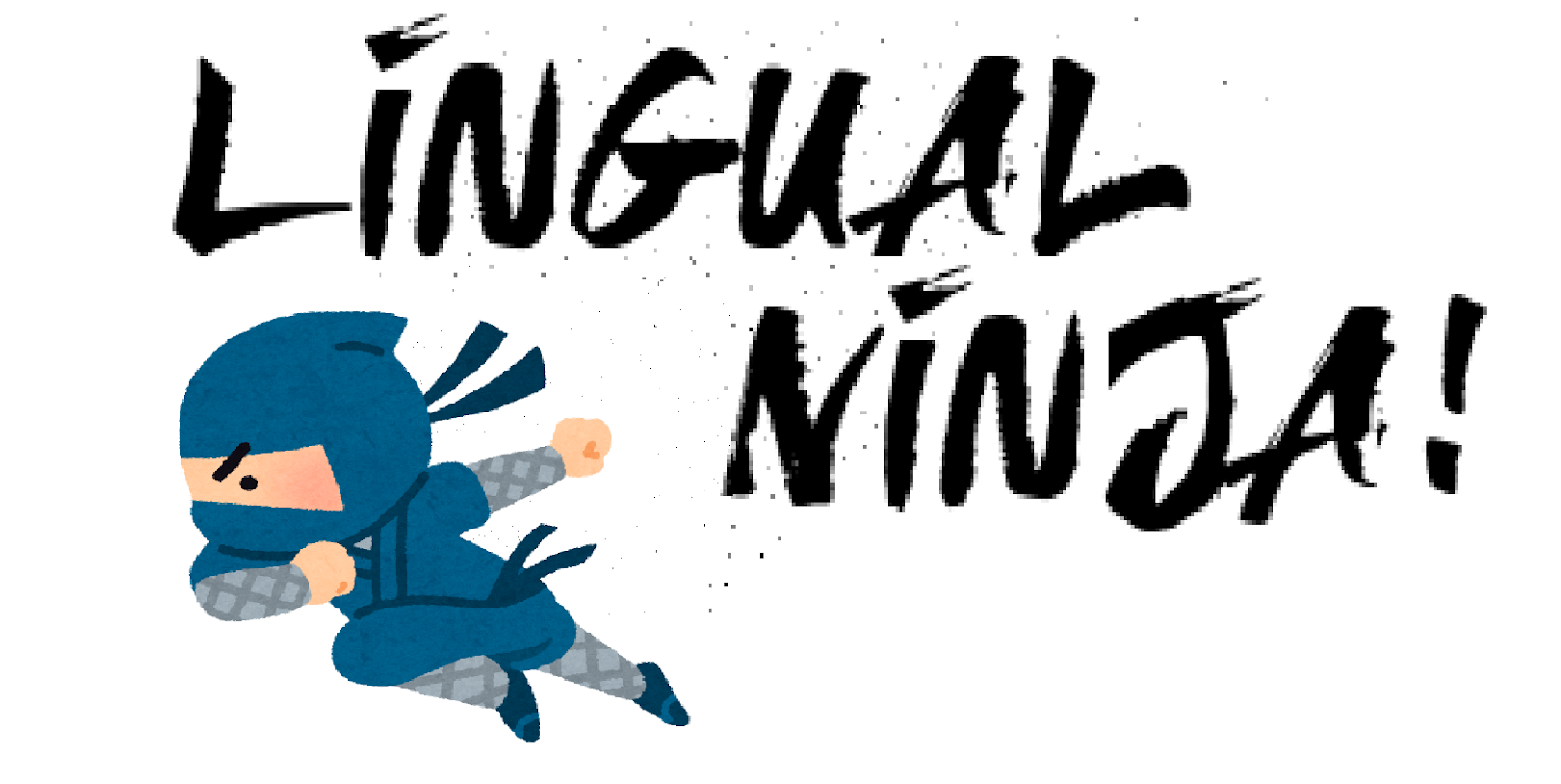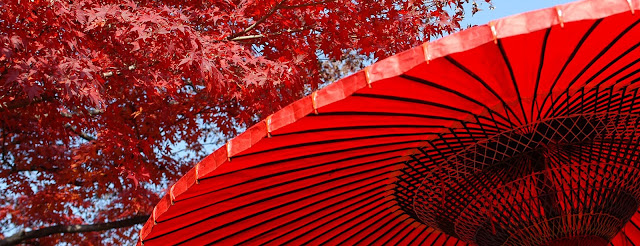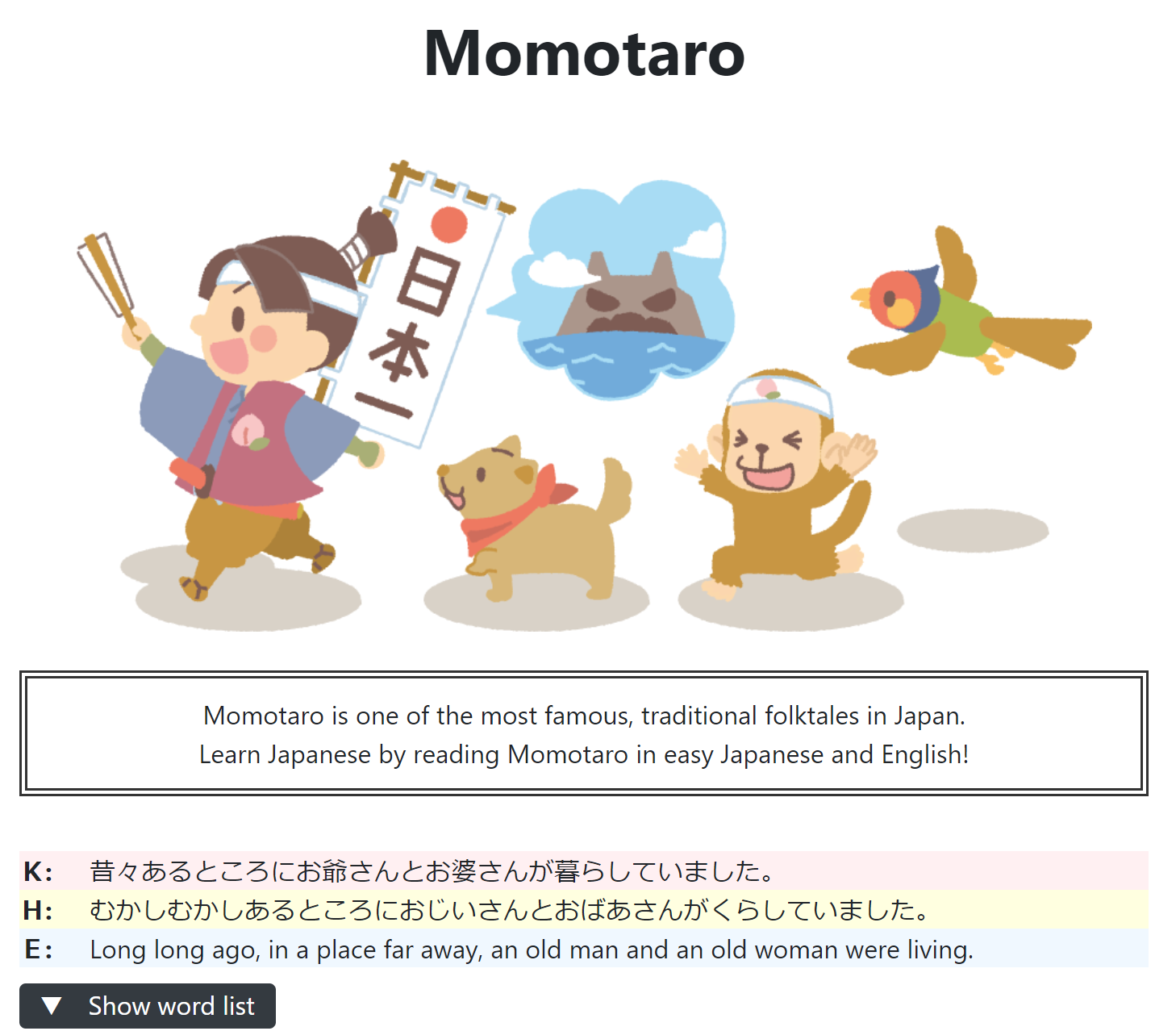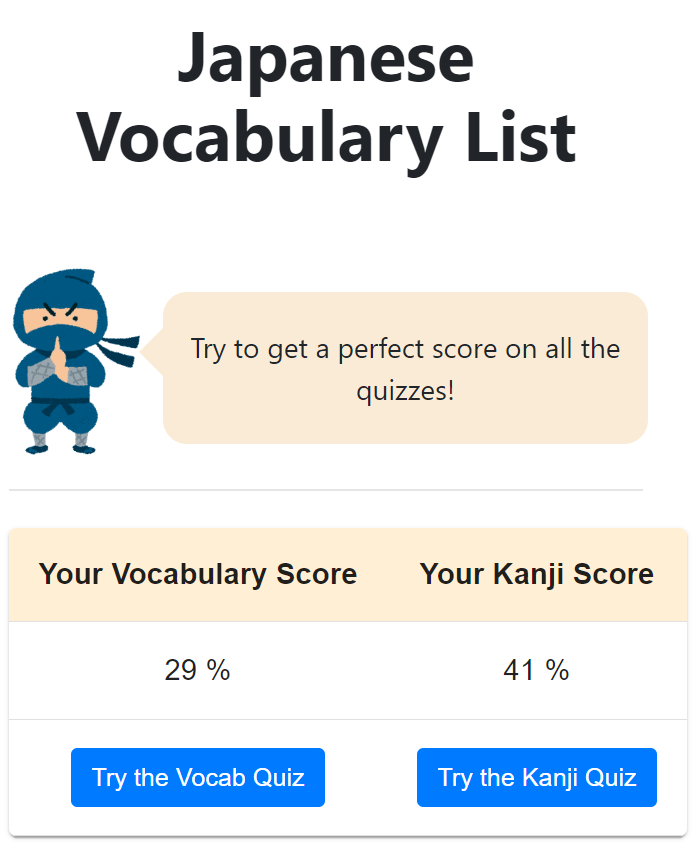Hello. I'm Kosuke!
In the previous article, we studied about "の(no)"!
~の(no) >>
As I explained in that article, "の(no)" is a post-positional particle.
(It can be replaced by ['s] or [of] in English!)
In this article, I would like to talk about another post-positional particle, "を(wo)"!
I want you to remember only one thing from this article.
That is...
"を(wo)" makes an Object!
That's all I want you to learn from this article!
Regarding this, I will explain the three topics below:
1. The Hiragana character "を(wo)" is always a post-positional particle
2. Meaning of the particle "を(wo)"
3. Other usage for the particle "を(wo)"
2. Meaning of the particle "を(wo)"
3. Other usage for the particle "を(wo)"
Let's see the details!
1. The Hiragana character "を(wo)" is always a a post-positional particle
In the Hiragana chart below, there is a Hiragana character "を(wo)".
Hiragana chart >>
However, this Hiragana character can be used only as the post-positional particle.
It is different from other post-positional particles, because other Hiragana characters used for post-positional particles can be included in many other words.
For example, we have already studied other post-positional particles, like は(wa), が(ga), and の(no).
These Hiragana characters are not dedicated to post-positional particles.
So they can be used in other words, like below:
| English | Hiragana | Romaji |
|---|---|---|
| scissors | はさみ | ha sa mi |
| post card | はがき | ha ga ki |
| yesterday | きのう | ki no u |
Like the table above, the Hiragana characters of other post-positional particles can be included in any other Japanese words.
So when you see the Hiragana characters, maybe it is difficult for you to know whether the characters are post-positional particles or they are included in other words.
Especially since Japanese sentences don't include any spaces between words.
It makes it difficult for you to know whether it is a post-positional particle or not.
However, the Hiragana character "を(wo)" has only one purpose.
"を(wo)" is always a post-positional particle.
So when you see the character "を(wo)" in Japanese sentences, you can easily know it is a post-positional particle.
I have already told you the point I want you to remember from this article.
It was...
"を(wo)" makes an Object!
Do you remember this?
Its basic form is...
[Subject] は [Object] を [Verb].
As I explained in the article below, the noun in front of "は" becomes the subject of the sentence.
Like that,
the noun in front of "を" becomes the Object of the sentence!
the noun in front of "を" becomes the Object of the sentence!
"Object" means the target of the action of verbs.
Let's check the examples!
Examples:
| 1. | わ | た | し | は | に | ん | じゅ | つ | を | つ | か | う | 。 | |||||
| wa | ta | shi | wa | ni | n | ju | tsu | wo | tsu | ka | u |
Meaning : "I use an art of the ninja."
| わたし | : | I | |||||||
| にんじゅつ | : | art of the ninja | |||||||
| つかう | : | use |
If you still don't remember all Hiragana characters, please check this:
If you don't know why は makes the sound "wa" instead of "ha", please check this:
If you want to know the details about わたし, please check this:
| 2. | わ | た | し | は | や | み | を | こ | の | む | 。 | |||||
| wa | ta | shi | wa | ya | mi | wo | ko | no | mu |
Meaning : "I like darkness."
| やみ | : | darkness | |||||||
| このむ | : | like, love, prefer |
| 3. | わ | た | し | は | ぶ | き | を | な | げ | る | 。 | |||||
| wa | ta | shi | wa | bu | ki | wo | na | ge | ru |
Meaning : "I throw weapons."
| ぶき | : | weapon | |||||||
| なげる | : | throw |
These three sentences are so useful for you to become a ninja!
Like the examples above, a noun in front of "を(wo)" becomes an Object of the sentence!
3. Other usage for the prticle "を(wo)"
I think it is enough for you just to remember:
"を(wo)" makes an Object!
However, "を(wo)" also has a little different meaning as well.
Actually, "を(wo)" has three meanings:
Regarding "Object":
I have already talked about this in this article.
This is the most common usage of "を(wo)".
So I think it is OK for you to remember only this meaning for now.
Regarding "Starting point":
Sometimes, a noun in front of "を(wo)" becomes the starting point of the verb.
In this case, "を(wo)" is similar to the English word, "from".
Let's see the examples!
| 1. | わ | た | し | は | い | え | を | しゅ | っ | ぱ | つ | す | る | 。 | |||||
| wa | ta | shi | wa | i | e | wo | syu | p | pa | tsu | su | ru |
Meaning : "I leave home."
| いえ | : | home | |||||||
| しゅっぱつする | : | start, leave |
| 2. | さ | す | け | は | む | ら | を | で | る | 。 | |||||
| sa | su | ke | wa | mu | ra | wo | de | ru |
Meaning : "Sasuke leaves the village."
| むら | : | village | |||||||
| でる | : | leave |
Like the above example, if the Verb is "start", "leave", or "exit", the noun in front of "を(wo)" can become the starting point of the verb.
If the verb means movement or transfer, the noun in front of "を(wo)" can be the place where the movement is implemented.
Maybe, in this case, it is best for you to translate "を(wo)" into the English preposition, "in".
Let's see the examples below!
| 1. | さ | す | け | が | も | り | を | は | し | る | 。 | |||||
| sa | su | ke | ga | mo | ri | wo | ha | shi | ru |
Meaning : "Sasuke runs in the forest."
| もり | : | forest, grove | |||||||
| はしる | : | run |
| 2. | さ | す | け | が | そ | ら | を | と | ぶ | 。 | |||||
| sa | su | ke | ga | so | ra | wo | to | bu |
Meaning : "Sasuke flies in the sky."
| そら | : | sky | |||||||
| とぶ | : | fly |
Like the examples above, the noun in front of "を(wo)" is the place where the subject moves.
Were these understandable?
Like this, "を(wo)" has three meanings.
・Object
・Starting point
・Movement
However, "Object" is the most important.
In this article, I am glad if you remember:
"を(wo)" makes an Object!
I hope this article helps you become a ninja!
Thank you for reading!






















No comments:
Post a Comment